Forthcoming
 |
|
| 15th century copy of The Cloud of Unknowing (1460). |
 |
| Sunrise over the Himalayas |
“If a Bible of India were compiled, … eternal treasures of old wisdom and poetry would enrich the times of to-day. […] Amongst those compositions,…. the Vedas, the Upanishads and the Bhagavad-Gita would rise above the rest like Himalayas of the Spirit of man.” (Introduction of Juan Mascaro’s ‘The Himalayas of the Soul’, 1938)
The enthronement of the Goddess of Reason in Notre Dame seems to have been a symbolic gesture of great significance to the Western world- rather like the hewing down of Wotan’s oak by the Christian missionaries. For then, as at the Revolution, no avenging bolt from heaven struck the blasphemer down.
It is certainly more than an amusing coincidence that just at that time a Frenchman, Anquetil du Perron, was living in India, and, in the early eighteen-hundreds, brought back with him a… collection of fifty Upanishads which gave the Western world its first deep insight into the… mind of the East. To the historian this is mere chance without any factors of cause and effect. But in view of my medical experience I cannot take it as accident. It seems to me rather to satisfy a psychological law whose validity in personal life, at least, is complete. For every piece of conscious life that loses its importance and value- so runs the law- there arises a compensation in the unconscious. We may see in this an analogy to the conservation of energy in the physical world… . […] Now the doctor in me refuses point blank to consider the life of a people as something that does not conform to psychological law. A people, in the doctors eyes, presents only a somewhat more complex picture of psychic life than the individual.
And so we can draw a parallel: just as in me, a single human being, the darkness calls forth the helpful light, so does it also in the psychic life of a people. In the crowds that poured into Notre Dame, bent on destruction, dark and nameless forces were at work that swept the individual off his feet; these forces worked also upon Anquetil du Perron, and provoked an answer which has come down in history. For he brought the Eastern mind to the West, and its influence upon us we cannot as yet measure. Let us beware of underestimating it! So far, indeed, there is little of it to be seen in Europe on the intellectual surface: some orientalists, one or two Buddhist enthusiasts, and a few sombre celebrities like Madame Blavatsky and Annie Besant. These manifestations make us think of tiny, scattered islands in the ocean of mankind; in reality they are like the peaks of submarine mountain-ranges of considerable size.” (Jung, Modern Man in Search of a Soul, 1932).
the access to [the Vedas], opened to us through the Upanishads, is in my eyes the greatest advantage which this still young century enjoys over previous ones, because I believe that the influence of the Sanscrit literature will penetrate not less deeply than did the revival of Greek literature in the fifteenth century
the Hindus… have in effect implicitly possessed the whole history of philosophy, presenting in figurative and undeveloped form what we exhibit only too abstractly through only too many writers and volumes.
Anquetil du Perron, for his part, said of the Upanishads that they represented “the production of the highest human wisdom”.
When the mind is silent… then it can enter into a world which is far beyond the mind: the highest End.
The mind should be kept in the heart as long as long as it has not reached the Highest End. This is wisdom, and this is liberation. Everything else is only words.
 |
| The Milky-way over the Himalayas |
‘What you see when you look into another person’s eyes, that is the Atman… .’
‘And who is he whom we see when we look in water or in a mirror?’
‘The same is seen in all…’
‘The spirit that wanders in joy in the land of dreams, that is the Atman, that is the Immortal beyond fear: that is Brahman.’
‘The spirit who is sleeping without dreams inthe silent quietness of deep sleep, that is the Atman, that is the Immortal beyond fear: that is Brahman.’
The wind has not a body, nor lightning, nor thunder, nor clouds; but when those rise into the higher spheres then they find their body of light. In the same way, when the soul is in silent quietness it arises and leaves the body, and reaching the Spirit Supreme finds there its body of light.
Know that when the eye looks into space it is the Spirit of man that sees: the eye is only the organ of sight. […] When one says “I am speaking,” it is the Spirit that speaks: the voice is the organ of speech. When one says “I am hearing,” it is the Spirit that hears: the ear is the organ of hearing. And when one says “I think,” it is the Spirit that things: the mind is the organ of thought. It is because of the light of the Spirit that the human mind can see, and can think, and enjoy…”
To Janaka king of Videha came once Yajnavalkya meaning to keep in silence the supreme sercret wisdom. But once, when Janaka and Yajnavalkya had been holding a discussion at the offering of the sacred fire, Yajnavalkya promised to grant the king any wish and the king chose to ask questions according to his desire.
What is the Soul? asked… the king of Videha
Yajnavalkya spoke:
It is the consciousness of life. It is the light of the heart. For ever remaining the same, the Spirit of man wanders in the world of waking life and also in the world of dreams. He seems to wander in thought. He seems to wander in joy.
But in the rest of deep sleep he goes beyond this world and beyond its fleeting forms.
For in truth when the Spirit of man comes to life and takes a body, then he is joined with mortal evils; but when at death he goes beyond, then he leaves evil behind.
The Spirit of man has two dwellings: this world and the world beyond. There is also a third dwelling-place: the land of sleep and dreams. Resting in this borderland the Spirit of man can behold his dwelling in this world and in the other world afar, and wandering in this borderland he beholds behind him the sorrows of this world and in front of him he sees the joys of the beyond.
When the Spirit of man retires to rest, he takes with him materials from this all-containing world, and he creates and destroys in his own glory and radiance. Then the Spirit of man shines in his own light.
Abandoning his body by the gate of dreams, the Spirit beholds in awakening his senses sleeping. Then he takes his own light and returns to his home, this Spirit of golden radiance, the wandering swan everlasting.
Leaving his nest below in charge of the breath of life, the immortal Spirit soars afar from his nest. He moves in all regions wherever he loves, this Spirit of golden radiance, the wandering swan everlasting.
So they say that one should not wake up a person suddenly, for hard to heal would he be if the Spirit did not return. They say also that dreams are like the waking state, for what is seen when awake is seen again in a dream. What is true is that the Spirit shines in his own light.
Even as a great fish swims along the two banks of a river, first along the eastern bank and then the western bank, in the same way the Spirit of man moves along beside his two dwellings: this waking world and the land of sleep and dreams.
As a man in the arms of the woman beloved feels only peace all around, even so the Soul in the embrace of Atman, the Spirit of vision, feels only peace all around.
…in the ocean of Spirit the seer alone beholding his own immensity.
…when the Spirit that lives in the eye has returned to his own source, then the soul knows no more forms.
Even as a caterpillar, when coming to the end of a blade of grass, reaches out to another blade of grass and draws itself over to it, in the same way the Soul, leaving the body and unwisdom behind, reaches out to another body and draws itself over to it.
The Soul is Brahman, the Eternal.
It is made of consciousness and mind: it is made of life and vision.
As the slough of a snake lies dead upon an ant-hill, even so the mortal body; but the incorporeal immortal Spirit is life and light and Eternity.
‘I have found the small path known of old that stretches far away. By it the sages whoknow the Spirit arise to the regions of heaven and then beyond to liberation.’
…let the lover of Brahman follow wisdom. Let him not ponder on many words, for many words are weariness.
This is the world of the Spirit, O king. Thus spoke Yajnavalkya.
O Master. Yours is my kingdom and I am yours, said then the king of Videha.
 |
|
Stars over the Himalayas |

 Danse Macabre in St. Mary’s Church, Lübecker, by Bernt Notke (destroyed in a bombing raid in 1942)
Danse Macabre in St. Mary’s Church, Lübecker, by Bernt Notke (destroyed in a bombing raid in 1942)
 |
| Michaelangelo, The Torment of St. Anthony, circa 1488 |
|
Durer’s Frontpiece to Sabastian Brants Ship of Fools 1494. |
 |
| Bernardino Parenzano, The Temptation of St. Anthony, 1494. ‘Of Useless Books’, woodcut for the Latin edition of Brants Ship of Fools, 1497. Albert Durer, The Four Horsemen of the Apocalypse, 1498 |
 |
| Josse Bade, Navicula Stultarum Mulierum, 1498. |
 |
| Hieronymus Bosch, Diptyche with The Ship of fools, circa 1500. |
 |
| Matthias Grunewald, The Temptation of St. Anthony from the Isenheim Altarpiece, 1516. |
 |
| Niklaus Manuel Deutsch, The Temptation of St. Anthony, 1520. |
 |
| Pieter Bruegel the Elder, The Triumph of Death, circa 1562. |
 |
| Pieter Bruegel the Elder, The Lepers, 1568. |
 Fools cap world map, c 1590.
Fools cap world map, c 1590.
Stultifera Navis-
At the end of the Middle Ages, leprosy disappeared from the Western world. In the margins of the community, at the gates of cities, there stretched wastelands which sickness had ceased to haunt but had left sterile and long uninhabitable. For centuries, these reaches would belong to the non-human. From the fourteenth to the seventeenth century, they would wait, soliciting with strange incantations a new incarnation of disease, another grimace of terror, renewed rites of purification and exclusion.From the High Middle Ages to the end of the Crusades, leprosariums had multiplied their cities of the damned over the entire face of Europe. […] …we shall hear their names again in the history of another sickness… . A strange disappearance, which was doubtless not the long sought effect of obscure medical practices, but the spontaneous result of segregation and also the consequence, after the Crusades, of the break with the Eastern sources of infection. Leprosy withdrew, leaving derelict these low places and these rites which were intended, not to suppress it, but to keep it at a sacred distance, to fix it in an inverse exhaltation. What doubtless remained longer than leprosy, and would persist when the lazar houses had been empty for years, were the values and images attached to the figure of the leper as well as the meaning of his exclusion, the social importance of that insistent and fearful figure which was not driven off without first being inscribed within a sacred circle.If the leper was removed from the world, and from the community of the Church visible, his existence was yet a constant manifestation of God, since it was a sign both of His anger and of His grace: “My friend,” says the ritual of the Church of Vienne, “it pleaseth Our Lord that thou shouldst be infected with this malady, and thou hast great grace at the hands of Our Lord that he desireth to punish thee for thy iniquities in this world.” And at the very moment when the priest and his assistants drag him out of the church with backward step, the leper is assured that he still bears witness for God: “And howsoever thou mayest be apart from the Church and the company of the Sound, yet art thou not apart from the grace of God.” Brueghel’s lepers attend at a distance, but forever, that climb to Calvary on which the entire people accompanies Christ. Hieratic witnesses of evil, they accomplish their salvation in and by their very exclusion: in a strange reversibility that is the opposite of good works and prayer, they are saved by the hand that is not stretched out. The sinner who abandons the leper at his door opens his way to heaven. “For which have patience in thy malady; for Our Lord hateth thee not because of it, keepeth thee not from his company; but if thou hast patience thou wilt be saved, as was the leper who died before the gate of the rich man and was carried straight to paradise.” Abandonment is his salvation; his exclusion offers him another form of communion.Leprosy disappeared, the leper vanished, or almost, from memory; these structures remained. Often, in these same places, the formulas of exclusion would be repeated, strangely similar two or three centuries later. Poor vagabonds, criminals, and “deranged minds” would take the part played by the leper, and we shall see what salvation was expected from this exclusion, for them and for those who excluded them as well. With an altogether new meaning and in a very different culture, the forms would remain-essentially that major form of a rigorous division which is social exclusion but spiritual reintegration.The role that leprosy had played was first taken by venereal disease. Such diseases were the natural heir to leprosy in the late fifteenth century, and the disease was treated in several leper hospitals. Under Francois I, an attempt was made to confine it to the hospital of the Parish of Saint-Eustache, and then in the parish of Saint-Nicolas, both of which had served as lazar houses. Twice more, under Charles VIII and again in 1559, various buildings and outhouses at Saint-Germain-des-Pres previously used for lepers were converted for venereal diseases. Soon the disease was so common that the construction of special buildings was being considered ‘in certain spacious areas surrounding towns and suburbs, segregated from passers-by’. A new leprosy was born, which took the place of the former, but… these new lepers too struck fear into the hearts of the old.Lepers were far from overjoyed at being forced to share their space with these newcomers to the world of horror: ‘This astonishing and contagious disease is much to be feared: even the lepers themselves reject it in horror, and refuse to permit those who have contracted the disease to keep their company’. But despite their longstanding right to stay in these segregated areas, there were too few of them… , and the venereal, more or less everywhere, had soon taken their place.Yet in the classical age it was not venereal diseases that would take over the role that leprosy had played in medieval culture… . […] It is not in venereal disease that the true heir of leprosy should be sought, but [in madness].But only after a long latency period of almost two centuries did that new obsession take the place of the fear that leprosy had instilled… , and elicit similiar reactions of division, exclusion and purification, which are akin to madness itself. But before madness was brought under control towards the mid-seventeenth century, and before ancient rituals were resuscitated in its honour, it was linked obstinately to many of the major experiences of the Renaissance.A brief overview of this presence and some of the essential figures is now in order.The simplest of these figures is also the most symbolic.Something new appears in the imaginary landscape of the Renaissance; soon it will occupy a privileged place there: the Ship of Fools, a strange “drunken boat” that glides along the calm rivers of the Rhineland and the Flemish canals.The Narrenschiff, of course, is a literary composition, probably borrowed from the old Argonaut cycle, one of the great mythic themes recently revived and rejuvenated, acquiring an institutional aspect in the Burgundy Estates. Fashion favored the composition of these Ships, whose crew of imaginary heroes, ethical models, or social types embarked on a great symbolic voyage which would bring them, if not fortune, then at least the figure of their destiny or their truth. Thus Symphorien Champier composes a Ship of Princes and Battles of Nobility in 1502, then a Ship of Virtuous Ladies in 1503; there is also a Ship of Health, alongside the Blauive Schute of Jacob van Oestvoren in 1413, Sebastian Brant’s Narrenschiff in 1494, and the work of Josse Bade-Stultiferae naviculae scaphae fatuarum mulierum in 1498. Bosch’s painting, of course, belongs to this dream fleet.But of all these romantic or satiric vessels, the Narrenschiff is the only one that had a real existence– for they did exist, these boats that conveyed their insane cargo from town to town. An itinerant existence was often the lot of the mad. The towns drove them outside their limits; they were allowed to wander in the open countryside, when not entrusted to a group of merchants and pilgrims. The custom was especially frequent in Germany; in Nuremberg, in the first half of the fifteenth century, the presence of 63 madmen had been registered; 31 were driven away; in the fifty years that followed, there are records of 21 more obligatory departures… . Frequently they were handed over to boatmen… . Sometimes the sailors disembarked these bothersome passengers sooner than they had promised… . It is not easy to discover the exact meaning of this custom. One might suppose it was a general means of extradition by which municipalities sent wandering madmen out of their own jurisdiction; a hypothesis which will not in itself account for the facts, since certain madmen, even before special houses were built for them, were admitted to hospitals and cared for as such; at the Hotel-Dieu in Paris, their cots were set up in the dormitories. Moreover, in the majority of the cities of Europe there existed throughout the Middle Ages and the Renaissance a place of detention reserved for the insane; there was for example the Chatelet of Melun or the famous Tour aux Fous in Caen; there were the numberless Narrtunner of Germany, like the gates of Lubeck or the Jungpfer of Hamburg. Madmen were thus not invariably expelled. One might then speculate that among them only foreigners were driven away, each city agreeing to care for those madmen among its own citizens. Do we not in fact find among the account books of certain medieval cities subsidies for madmen or donations made for the care of the insane? However, the problem is not so simple, for there existed gathering places where the madmen, more numerous than elsewhere, were not autoch-thonous. First come the shrines: Saint-Mathurin de Larchant, Saint-Hildevert de Gournay, Besancon, Gheel; pilgrimages to these places were organized, often supported, by cities or hospitals. It is possible that these ships of fools, which haunted the imagination of the entire early Renaissance, were pilgrimage boats, highly symbolic cargoes of madmen in search of their reason: some went down the Rhineland rivers towards Belgium and Gheel; others sailed up the Rhine toward the Jura and Besancon.But other cities, like Nuremberg, were certainly not shrines and yet contained great numbers of madmen- many more, in any case, than could have been furnished by the city itself. These madmen were housed and provided for in the city budget, and yet they were not given treatment; they were simply thrown into prison. We may suppose that in certain important cities- centers of travel and markets- madmen had been brought in considerable numbers by merchants and mariners and ‘lost’ there, thus ridding their native cities of their presence. It may have happened that these places of ‘counterpilgrimage’ have become confused with the places where, on the contrary, the insane were taken as pilgrims. Interest in in cure and in exclusion coincide: madmen were confined in the holy locus of a miracle. It is possible that the village of Gheel developed in this manner- a shrine that became a ward, a holy land where madness hoped for deliverance… .What matters is that the vagabond madmen, the act of driving them away, their departure and embarkation do not assume their entire significance on the plane of social utility or security. Other meanings much closer to rite are certainly present; and we can still discern some traces of them. […] …the expulsion of madmen had become one of a number of ritual exiles.Thus we better understand the curious implication assigned to the navigation of madmen and the prestige attending it. […] …to hand a madman over to sailors was to be permanently sure he would not be prowling beneath the city walls; it made sure that he would go far away; it made him a prisoner of his own departure. But water adds to this the dark mass of its own values; it carries off, but it does more: it purifies. Navigation delivers man to the uncertainty of fate; on water, each of us is in the hands of his own destiny; every embarkation is, potentially, the last. It is for the other world that the madman sets sail in his fools’ boat; it is from the other world that he comes when he disembarks. The madman’s voyage is at once a rigorous division and an absolute Passage. In one sense, it simply develops, across a half-real, half-imaginary geography, the madman’s liminal position on the horizon of medieval concern—a position symbolized and made real at the same time by the madman’s privilege of being confined within the city gates: his exclusion must enclose him; if he cannot and must not have another prison than the threshold itself, he is kept at the point of passage. He is put in the interior of the exterior, and inversely. A highly symbolic position, which will doubtless remain his until our own day, if we are willing to admit that what was formerly a visible fortress of order has now become the castle of our conscience.Water and navigation certainly play this role. Confined on the ship, from which there is no escape, the madman is delivered to the river with its thousand arms, the sea with its thousand roads, to that great uncertainty external to everything. He is a prisoner in the midst of what is the freest, the openest of routes: bound fast at the infinite crossroads. He is the Passenger par excellence: that is, the prisoner of the passage. And the land he will come to is unknown— as is, once he disembarks, the land from which he comes. He has his truth and his homeland only in that fruitless expanse between two countries that cannot belong to him. […] One thing at least is certain: water and madness have long been linked in the dreams of European man.…more than once in the course of time, the same theme reappears: among the mystics of the fifteenth century, it has become the motif of the soul as a skiff, abandoned on the infinite sea of desires, in the sterile field of cares and ignorance, among the mirages of knowledge, amid the unreason of the world—a craft at the mercy of the sea’s great madness, unless it throws out a solid anchor, faith, or raises its spiritual sails so that the breath of God may bring it to port. At the end of the sixteenth century, De Lancre sees in the sea the origin of the demoniacal leanings of an entire people: the hazardous labor of ships, dependence on the stars, hereditary secrets, estrangement from women—the very image of the great, turbulent plain itself makes man lose faith in God and all his attachment to his home; he is then in the hands of the Devil, in the sea of Satan’s ruses. […] …neglecting an immense literature that stretches from Ophelia to the Lorelei, let us note only the great half-anthropological, half-cosmological analyses of Heinroth, which interpret madness as the manifestation in man of an obscure and aquatic element, a dark disorder, a moving chaos, the seed and death of all things, which opposes the mind’s luminous and adult stability.But if the navigation of madmen is linked in the Western mind with so many immemorial motifs, why, so abruptly, in the fifteenth century, is the theme suddenly formulated in literature and iconography? Why does the figure of the Ship of Fools and its insane crew all at once invade the most familiar landscapes? Why, from the old union of water and madness, was this ship born one day, and on just that day?Because it symbolized a great disquiet, suddenly dawning on the horizon of European culture at the end of the Middle Ages. Madness and the madman become major figures, in their ambiguity: menace and mockery, the dizzying unreason of the world, and the feeble ridicule of men.First a whole literature of tales and moral fables, in origin, doubtless, quite remote. But by the end of the Middle Ages, it bulks large: a long series of “follies” which, stigmatizing vices and faults as in the past, no longer attribute them all to pride, to lack of charity, to neglect of Christian virtues, but to a sort of great unreason for which nothing, in fact, is exactly responsible, but which involves everyone in a kind of secret complicity. The denunciation of madness (la folie) becomes the general form of criticism.In farces and sorties, the character of the Madman, the Fool, or the Simpleton assumes more and more importance. He is no longer simply a ridiculous and familiar silhouette in the wings: he stands center stage as the guardian of truth-playing here a role which is the complement and converse of that taken by madness in the tales and the satires. If folly leads each man into a blindness where he is lost, the madman, on the contrary, reminds each man of his truth; in a comedy where each man deceives the other and dupes himself, the madman is comedy to the second degree: the deception of deception; he utters, in his simpleton’s language which makes no show of reason, the words of reason that release, in the comic, the comedy: he speaks love to lovers, the truth of life to the young, the middling reality of things to the proud, to the insolent, and to liars. Even the old feasts of fools, so popular in Flanders and northern Europe, were theatrical events, and organized into social and moral criticism, whatever they may have contained of spontaneous religious parody.In learned literature, too, Madness or Folly was at work, at the very heart of reason and truth. It is Folly which embarks all men without distinction on its insane ship and binds them to the vocation of a common odyssey (Van Oestvoren’s Blauwe Schute, Brant’s Narrenschiff); it is Folly whose baleful reign Thomas Mumer conjures up in his Narrenbeschwonmg; it is Folly which gets the best of Love in Corroz’s satire Centre fol amour, or argues with Love as to which of the two comes first, which of the two makes the other possible, and triumphs in Louise Labe’s dialogue, Debat de folie et d’amour. Folly also has its academic pastimes; it is the object of argument, it contends against itself; it is denounced, and defends itself by claiming that it is closer to happiness and truth than reason, that it is closer to reason than reason itself… . Finally, at the center of all these serious games, the great humanist texts: the Moria rediviva of Flayder and Erasmus’s Praise of Folly. And confronting all these discussions, with their tireless dialectic, confronting these discourses constantly reworded and reworked, a long dynasty of images, from Hieronymus Bosch with The Cure of Madness and The Ship of Fools, down to Brueghel and his Dulle Griet, woodcuts and engravings transcribe what the theater, what literature and art have already taken up: the intermingled themes of the Feast and of the Dance of Fools. Indeed, from the fifteenth century on, the face of madness has haunted the imagination of Western man.A sequence of Dates speaks for itself: the Dance of Death in the Cimetiere des Innocents doubtless dates from the first years of the fifteenth century, the one in the Chaise-Dieu was probably composed around 1460; and it was in 1485 that Gyuot Marchant published his Danse Macarbe. These sixty years, certainly, were dominated by all this grinning imagery of death. And it was in 1494 that Brant wrote the Narrenschiff; in 1497 it was translated inot Latin. In the very last years of the century Hieronymus Bosch painted his Ship of Fools. The Praise of Folly dates from 1509. The order of succession is clear.Up to the second half of the fifteenth century, or even a little beyond, the theme of death reigns alone. The end of man, the end of time bear the face of pestilence and war. What overhangs human existence is this conclusion and this order from which nothing escapes. The presence that threatens even within this world is a fleshless one. Then in the last years of the century this enormous uneasiness turns on itself; the mockery of madness replaces death and its solemnity. From the discovery of that necessity which inevitably reduces man to nothing, we have shifted to the scornful contemplation of that nothing which is existence itself. Fear in the face of the absolute limit of death turns inward in continuous irony; man disarms it in advance, making it an object of derision by giving it an everyday, tamed form, by constantly renewing it in the spectacle of life, by scattering it throughout the vices, the difficulties, and the absurdities of all men. Death’s annihilation is no longer anything because it was already everything, because life itself was only futility, vain words, a squabble of cap and bells. The head that will become the skull is already empty. Madness is the deja-la of death. But it is also its vanquished presence, evaded in those everyday signs which, announcing that death reigns already, indicate that its prey will be a sorry prize indeed. What death unmasks was never more than a mask; to discover the grin of the skeleton, one need only lift off something that was neither beauty nor truth, but only a plaster and tinsel face. From the vain mask to the corpse, the same smile persists. But when the madman laughs, he already laughs with the laugh of death; the lunatic, anticipating the macabre, has disarmed it.The substitution of the theme of madness for that of death does not mark a break, but rather a torsion within the same anxiety. What is in question is still the nothingness of existence, but this nothingness is no longer considered an external, final term, both threat and conclusion; it is experienced from within as a continuous and constant form of existence. And where once man’s madness had been not to see that death’s term was approaching, so that it was necessary to recall him to wisdom with the spectacle of death, now wisdom consisted of denouncing madness everywhere, teaching men that they were no more than dead men already, and that if the end was near, it was to the degree that madness, become universal, would be one and the same with death itself. This is what Eustache Desbchamps prophesies:We are cowardly and weak, Covetous, old, evil-tongued.Fools are all I see, in truth.The end is near, All goes ill… The elements are now reversed. It is no longer the end of time and of the world which will show retrospectively that men were mad not to have been prepared for them; it is the tide of madness, its secret invasion, that shows that the world is near its final catastrophe; it is man’s insanity that invokes and makes necessary the world’s end.In its various forms—plastic or literary—this experience of madness seems extremely coherent. Painting and text constantly refer to one another— commentary here and illustration there. We find the same theme of the Narrentanz over and over in popular festivals, in theatrical performances, in engravings and woodcuts, and the entire last part of the Praise of Folly is constructed on the model of a long dance of madmen in which each profession and each estate parades in turn to form the great round of unreason. It is likely that in Bosch’s Temptation of Saint Anthony in Lisbon, many figures of the fantastic fauna which invade the canvas are borrowed from traditional masks; some perhaps are transferred from the Malleus maleficarum. As for the famous Ship of Fools, is it not a direct translation of Brant’s Narrenschiff, whose tide it bears, and of which it seems to illustrate quite precisely canto XXVII, also consecrated to stigmatizing “drunkards and gluttons”? It has even been suggested that Bosch’s painting was part of a series of pictures illustrating the principal cantos of Brant’s poem.As a matter of fact, we must not be misled by what appears to be a strict continuity in these themes, nor imagine more than is revealed by history itself. It is unlikely that an analysis like the one Emile Male worked out for the preceding epochs, especially apropos of the theme of death, could be repeated. Between word and image, between what is depicted by language and what is uttered by plastic form, the unity begins to dissolve; a single and identical meaning is not immediately common to them. And if it is true that the image still has the function of speaking, of transmitting something consubstantial with language, we must recognize that it already no longer says the same thing; and that by its own plastic values painting engages in an experiment that will take it farther and farther from language, whatever the superficial identity of the theme. Figure and speech still illustrate the same fable of folly in the same moral world, but already they take two different directions, indicating, in a still barely perceptible scission, what will be the great line of cleavage in the Western experience of madness.The dawn of madness on the horizon the Renaissance is first perceptible in the decay of Gothic symbolism; as if that world, whose network of spiritual meanings was so close-knit, had begun to unravel, showing faces whose meaning was no longer clear except in the forms of madness. The Gothic forms persist for a time, but little by little they grow silent, cease to .. teach anything but their own fantastic presence, transcending all possible language (though still familiar to the eye). Freed from wisdom and from the teaching that organized it, the image begins to gravitate about its own madness.Paradoxically, this liberation derives from a proliferation of meaning, from a self-multiplication of significance, weaving relationships so numerous, so intertwined, so rich, that they can no longer be deciphered except in the esoterism of knowledge. Things themselves become so burdened with attributes, signs, allusions that they finally lose their own form. Meaning is no longer read in an immediate perception, the figure no longer speaks for itself; between the knowledge which animates it and the form into which it is transposed, a gap widens. It is free for the dream. One book bears witness to meaning’s proliferation at the end of the Gothic world, the Speculum humanae salvationis, which, beyond all the correspondences established by the patristic tradition, elaborates, between the Old and the New Testament, a symbolism not on the order of Prophecy, but deriving from an equivalence of imagery. The Passion of Christ is not prefigured only by the sacrifice of Abraham; it is surrounded by all the glories of torture and its innumerable dreams; Tubal the blacksmith and Isaiah’s wheel take their places around the Cross, forming beyond all the lessons of the sacrifice the fantastic tableau of savagery, of tormented bodies, and of suffering. Thus the image is burdened with supplementary meanings, and forced to express them. And dreams, madness, the unreasonable can also slip into this excess of meaning. The symbolic figures easily become nightmare silhouettes. Witness that old image of wisdom so often translated, in German engravings, by a longnecked bird whose thoughts, rising slowly from heart to head, have time to be weighed and reflected on; a symbol whose values are blunted by being overemphasized: the long path of reflection becomes in the image the alembic of a subtle learning, an instrument which distills quintessences. The neck of the Gutemensch is endlessly elongated, the better to illustrate, beyond wisdom, all the real mediations of knowledge; and the symbolic man becomes a fantastic bird whose disproportionate neck folds a thousand times upon itself—an insane being, halfway between animal and thing, closer to the charms of an image than to the rigor of a meaning. This symbolic wisdom is a prisoner of the madness of dreams.A fundamental conversion of the world of images: the constraint of a multiplied meaning liberates that world from the control of form. So many diverse meanings are established beneath the surface of the image that it presents only an enigmatic face. And its power is no longer to teach but to fascinate. Characteristic is the evolution of the famous gryllos already familiar to the Middle Ages in the English psalters, and at Chartres and Bourges. It taught, then, how the soul of desiring man had become a prisoner of the beast; these grotesque faces set in the bellies of monsters belonged to the world of the great Platonic metaphor and denounced the spirit’s corruption in the folly of sin. But in the fifteenth century the gryllos, image of human madness, becomes one of the preferred figures in the countless Temptations. What assails the hermit’stranquility is not objects of desire, but these hermetic, demented forms which have risen from a dream, and remain silent and furtive on the surface of a world. In the Lisbon Temptation, facing Saint Anthony sits one of these figures born of madness, of its solitude, of its penitence, of its privations; a wan smile lights this bodiless face, the pure presence of anxiety in the form of an agile grimace. Now it is exactly this nightmare silhouette that is at once the subject and object of the temptation; it is this figure which fascinates the gaze of the ascetic— both are prisoners of a kind of mirror interrogation, which remains unanswered in a silence inhabited only by the monstrous swarm that surrounds them. The gryllos no longer recalls man, by its satiric form, to his spiritual vocation forgotten in the folly of desire. It is madness become Temptation; all it embodies of the impossible, the fantastic, the inhuman, all that suggests the unnatural, the writhing of an insane presence on the earth’s surface-all this is precisely what gives the gryllos its strange power. The freedom, however frightening, of his dreams, the hallucinations of his madness, have more power of attraction for fifteenth-century man than the desirable reality of the flesh.What then is this fascination which now operates through the images of madness?First, man finds in these fantastic figures one of the secrets and one of the vocations of his nature. In the thought of the Middle Ages, the legions of animals, named once and for all by Adam, symbolically bear the values of humanity. But at the beginning of the Renaissance, the relations with animality are reversed; the beast is set free; it escapes the world of legend and moral illustration to acquire a fantastic nature of its own. And by an astonishing reversal, it is now the animal that will stalk man, capture him, and reveal him to his own truth. Impossible animals, issuing from a demented imagination, become the secret nature of man; and when on the Last Day sinful man appears in his hideous nakedness, we see that he has the monstrous shape of a delirious animal; these are the screech owls whose toad bodies combine, in Thierry Bouts’s Hell, with the nakedness of the damned; these are Stephan Lochner’s winged insects with cats’ heads, sphinxes with beetles’ wing cases, birds whose wings are as disturbing and as avid as hands; this is the great beast of prey with knotty fingers that figures in Matthias Grunewald’s Temptation. Animality has escaped domestication by human symbols and values; and it is animality that reveals the dark rage, the sterile madness that lie in men’s hearts.At the opposite pole to this nature of shadows, madness fascinates because it is knowledge. It is knowledge, first, because all these absurd figures are in reality elements of a difficult, hermetic, esoteric learning. These strange forms are situated, from the first, in the space of the Great Secret, and the Saint Anthony who is tempted by them is not a victim of the violence of desire but of the much more insidious lure of curiosity; he is tempted by that distant and intimate knowledge which is offered, and at the same time evaded, by the smile of the gryllos; his backward movement is nothing but that step by which he keeps from crossing the forbidden limits of knowledge; he knows already— and that is his temptation—what Jerome Cardan will say later: “Wisdom, like other precious substances, must be torn from the bowels of the earth.” This knowledge, so inaccessible, so formidable, the Fool, in his innocent idiocy, already possesses. While the man of reason and wisdom perceives only fragmentary and all the more unnerving images of it, the Fool bears it intact as an unbroken sphere: that crystal ball which for all others is empty is in his eyes filled with the density of an invisible knowledge. Brueghel mocks the sick man who tries to penetrate this crystal sphere, but it is this iridescent bubble of knowledge—an absurd but infinitely precious lantern—that sways at the end of the stick Dulle Griet bears on her shoulder. And it is this sphere which figures on the reverse of the Garden of Delights. Another symbol of knowledge, the tree (the forbidden tree, the tree of promised immortality and of sin), once planted in the heart of the earthly paradise, has been uprooted and now forms the mast of the Ship of Fools, as seen in the engraving that illustrates Josse Bade’s Stultiferae Naviculae; it is this tree, without a doubt, that sways over Bosch’s Ship of Fools.What does it presage, this wisdom of fools? Doubtless, since it is a forbidden wisdom, it presages both the reign of Satan and the end of the world; ultimate bliss and supreme punishment; omnipotence on earth and the infernal fall. The Ship of Fools sails through a landscape of delights, where all is offered to desire, a sort of renewed paradise, since here man no longer knows either suffering or need; and yet he has not recovered his innocence. This false happiness is the diabolical triumph of the Antichrist; it is the End, already at hand. Apocalyptic dreams are not new, it is true, in the fifteenth century; they are, however, very different in nature from what they had been earlier. The delicately fantastic iconography of the fourteenth century, where castles are toppled like dice, where the Beast is always the traditional dragon held at bay by the Virgin, in short where the order of God and its imminent victory are always apparent, gives way to a vision of the world where all wisdom is annihilated. This is the great witches’ Sabbath of nature: mountains melt and become plains, the earth vomits up the dead and bones tumble out of tombs; the stars fall, the earth catches fire, all life withers and comes to death. The end has no value as passage and promise; it is the advent of a night in which the world’s old reason is engulfed. It is enough to look at Durer’s Horsemen of the Apocalypse, sent by God Himself: these are no angels of triumph and reconciliation; these are no heralds of serene justice, but the disheveled warriors of a mad vengeance. The world sinks into universal Fury. Victory is neither God’s nor the Devil’s: it belongs to Madness.On all sides, madness fascinates man. The fantastic images it generates are not fleeting appearances that quickly disappear from the surface of things. By a strange paradox, what is born from the strangest delirium was already hidden, like a secret, like an inaccessible truth, in the bowels of the earth. […] In such images— and this is doubtless what gives them their weight, what imposes such great coherence on their fantasy—the Renaissance has expressed what it apprehended of the threats and secrets of the world.During the same period, the literary, philosophical, and moral themes of madness are in an altogether different vein.The Middle Ages had given madness, or folly, a place in the hierarchy of vices. Beginning with the thirteenth century, it is customarily ranked among the wicked soldiers of the psychomachy. It figures, at Paris as at Amiens, among the evil soldiery, and is among the twelve dualities that dispute the sovereignty of the human soul: Faith and Idolatry, Hope and Despair, Charity and Avarice, Chastity and Lust, Prudence and Folly, Patience and Anger, Gentleness and Harshness, Concord and Discord, Obedience and Rebellion, Perseverance and Inconstancy, Fortitude and Cowardice, Humility and Pride. In the Renaissance, Folly leaves this modest place and comes to the fore. Whereas according to Hugues de Saint-Victor the genealogical tree of the Vices, that of the Old Adam, had pride as its root, Folly now leads the joyous throng of all human weaknesses. Uncontested coryphaeus, she guides them, sweeps them on, and names them: “Recognize them here, in the group of my companions…. She whose brows are drawn is Philautia (Self-Love). She whom you see laugh with her eyes and applaud with her hands is Colacia (Flattery). She who seems half asleep is Lethe (Forgetfulness). She who leans upon her elbows and folds her hands is Misoponia (Sloth). She who is crowned with roses and anointed with perfume is Hedonia (Sensuality). She whose eyes wander without seeing is Anoia (Stupidity). She whose abundant flesh has the hue of flowers is Tryphe (Indolence). And here among these young women are two gods: the god of Good Cheer and the god of Deep Sleep.” The absolute privilege of Folly is to reign over whatever is bad in man. […] Louise Labe merely follows Erasmus when she has Mercury implore the gods: “Do not let that beautiful Lady [recalling Erasmus’ personification of Folly as a woman] perish who has given you so much pleasure.”But this new royalty has little in common with the dark reign of which we were just speaking and which communicated with the great tragic powers of this world.True, madness attracts, but it does not fascinate. It rules all that is easy, joyous, frivolous in the world. It is madness, folly, which makes men “sport and rejoice,”… . All within it is brilliant surface: no enigma is concealed.No doubt, madness has something to do with the strange paths of knowledge. The first canto of Brant’s poem is devoted to books and scholars; and in the engraving which illustrates this passage in the Latin edition of 1497, we see enthroned upon his bristling cathedra of books the Magister who wears behind his doctoral cap a fool’s cap sewn with bells. Erasmus, in his dance of fools, reserves a large place for scholars: after the Grammarians, the Poets, Rhetoricians, and Writers, come the Jurists; after them, the “Philosophers respectable in beard and mantle”; finally the numberless troop of the Theologians. But if knowledge is so important in madness, it is not because the latter can control the secrets of knowledge; on the contrary, madness is the punishment of a disorderly and useless science. If madness is the truth of knowledge, it is because knowledge is absurd, and instead of addressing itself to the great book of experience, loses its way in the dust of books and in idle debate; learning becomes madness through the very excess of false learning.O ye learned men, who bear great names,Look back at the ancient fathers, learned in the law.They did not weigh dogmas in shining white books,But fed their thirsty hearts with natural skill. (Sebastian Brant, Stultifera Navis, Latin Translation) According to the theme long familiar to popular satire, madness appears here as the comic punishment of knowledge and its ignorant presumption.In a general way, then, madness is not linked to the world and its subterranean forms, but rather to man, to his weaknesses, dreams, and illusions. Whatever obscure cosmic manifestation there was inmadness as seen by Bosch is wiped out in Erasmus; madness no longer lies in wait for mankind at the four comers of the earth; it insinuates itself within man, or rather it is a subtle rapport that manmaintains with himself. The mythological personification of madness in Erasmus is only a literary device. In fact, only “follies” exist—human forms of madness: “I count as many images as thereare men”; one need only glance at states, even the wisest and best governed: “So many forms of madness abound there, and each day sees so many new ones born, that a thousand Democrituses would not suffice to mock them.” There is no madness but that which is in every man, since it is man who constitutes madness in the attachment he bears for himself and by the illusions he entertains.Philautia is the first figure Folly leads out in her dance, but that is because they are linked by a privileged relation: self-attachment is the first sign of madness, but it is because man is attached to himself that he accepts error as truth, lies as reality, violence and ugliness as beauty and justice. “This man, uglier than a monkey, imagines himself handsome as Nereus; that one thinks he is Euclid because he has traced three lines with a compass; that other one thinks he can sing like Hermogenes, whereas he is the ass before the lyre, and his voice sounds as false as that of the rooster peckinghis hen.” In this delusive attachment to himself, man generates his madness like a mirage. The symbol of madness will henceforth be that mirror which, without reflecting anything real, will secretly offer the man who observes himself in it the dream of his own presumption. Madness deals not so much with truth and the world, as with man and whatever truth about himself he is able to perceive.In the domain of literary and philosophic expression, the experience of madness in the fifteenth century generally takes the form of moral satire. Nothing suggests those great threats of invasion that haunted the imagination of the painters. On the contrary, great pains are taken to ward it off; one does not speak of such things. Erasmus turns our gaze from that insanity “which the Furies let slip from hell, each time they release their serpents”; it is not these insane forms that he has chosen to praise, but the “sweet illusion” that frees the soul from “its painful cares and returns it to the various forms of sensuality.” This calm world is easily mastered; it readily yields its naive mysteries to the eyes of the wise man, and the latter, by laughter, always keeps his distance. Whereas Bosch, Brueghel, and Durer were terribly earth-bound spectators, implicated in that madness they saw surging around them, Erasmus observes it from far enough away to be out of danger; he observes it from the heights of his Olympus, and if he sings its praises, it is because he can laugh at it with the inextinguishable laughter of the Gods. For the madness of men is a divine spectacle: “In fact, could one make observations from the Moon, as did Menippus, considering the numberless agitations of the Earth, one would think one saw a swarm of flies or gnats fighting among themselves, struggling and laying traps, stealing from one another, playing, gambling, falling, and dying, and one would not believe the troubles, the tragedies that were produced by such a minute animalcule destined to perish so shortly.” Madness is no longer the familiar foreignness of the world; it is merely a commonplace spectacle for the foreign spectator; no longer a figure of the cosmos, but a characteristic of the aevum.For his contemporaries and for the generations that followed, Bosch was above all a moralist, and his work was a series of moral lessons. His figures were born of this world, but they demonstrated the monstrous contents of the human heart. ‘The difference between the paintings of this man and those of others is that others usually portray man as he appears from the outside: Bosch alone dares paint them as they are within,’ said Joseph de Siguenca. And it was that unsettling irony, that desire of wisdom to denounce all folly, that the same early seventeenth-century commentator saw in almost all of Bosch’s paintings, in the clear symbolism of the burning torch (the never-sleeping vigil of contemplative thought) and the owl, whose strange, fixed stare ‘keeps watch in the calm and the silence of the night, consuming oil, not wine.’The paths taken by the figure of the cosmic vision and the incisive movement that is moral reflection, between the tragic and the critical elements, now constantly diverge, creating a gap in the fabric of the experience of madness that will never be repaired. On the one side is the ship of fools, where mad faces slowly slip away into the night of the world, in landscapes that speak of strange alchemies of knowledge, of the dark menace of bestiality, and the end of time. On the other is the ship of fools that is merely there for the instruction of the wise, an exemplary, didactic odyssey whose purpose is to highlight faults in the human character.For [‘Bosch, Brueghel, Thierry Bouts and Durer’] madness unleashes its fury in the space of pure vision. Fantasies and threats, the fleeting fragments of dreams and the secret destiny of the world, where madness has a primitive, prophetic force, revealing that the dream-like is real and that a thin surface of illusion opens onto bottomless depths, and that the glittering surface of images opens the way to worrying figures that shine forever in the darkness. The inverse relation, no less painful, is that the reality of the world will one day be absorbed into the fantastic Image, at that delirious moment between being and nothingness which is pure destruction. When at last the world will be no more, but night and silence have not yet closed over, and all will flame up in a blinding flash, in the extremity of disorder that will precede the ordered monotony of the end of all things. The truth of the world resides in that last fleeting image. This weave of experience and secrecy, of immediate images and hidden enigmas, is unfurled in fifteenth-century painting as the tragic madness of the world.By contrast, in Brant, Erasmus and the whole humanist tradition, madness is confined to the universe of discourse. […] For… [the man of wisdom], it becomes a mere object, and in the worst possible manner, as it often winds up an object of ridicule: they tamed it by the act of praising it.This conflict between critical consciousness and tragic experience underlies all that was felt and formulated on the theme of madness at the beginning of the Renaissance. But it was short-live, and a century later, this grandiose structure, which at the beginning of the sixteenth century was so evident and clear-cut, had almost entirely disappeared. […] In short, the critical consciousness of madness was increasingly brought out into the light, while its more tragic components retreated ever further into the shadows, soon to almost vanish entirely. Only much later can a trace of the tragic element be again discerned, and a few pages in Sade and the work of Goya bear witness to the fact that this disappearance was merely an eclipse; the dark, tragic experience lived on in dreams and in the dark night of thoughts, and what happened in the sixteenth century was not a radical destruction but a mere occultation. The cosmic, tragic experience was hidden by the exclusive privileges of a critical consciousness. […] Behind the critical consciousness of madness in all its philosophical, scientific, moral and medicinal guises lurks a second, tragic consciousness of madness, which has never really gone away.It is that tragic consciousness that is visible in the last words of Nietzsche and the last visions of Van Gogh. It is that same element that Freud began to perceive at the furthest point of his journey, the great wound that he tried to symbolise in the mythological struggle between the libido and the death instinct. And it is that same consciousness that finds expression in the work of Antonin Artaud.It is only by examining such extreme discoveries that we can finally come to understand that the experience of madness common since the sixteenth century owes its particular face, and the origin of its meaning, to that absence, to that dark night and all that fills it. The linearity that led rationalist thought to consider madness as a form of mental illness must be reinterpreted in a vertical dimension. Only then does it become apparent that each of its incarnations is a more complete, but more perilous masking of tragic experience – an experience that it nonetheless failed to obliterate. When constraints were at their most oppressive, an explosion was necessary, and that is what we have seen since Nietzsche.How did it end up being the case that madness was appropriated by reason, so much so that at the dawn of the classical age all the tragic images previously associated with madness suddenly passed into shadow? How ended the movement that caused Artaud to write: ‘the Renaissance of the sixteenth century made a clean break with a reality that had laws both natural and superhuman, and the Renaissance humanism that resulted was not an expansion but a restriction for mankind’?A brief resume of this evolution is perhaps in order, for a clear understanding of what the classical age did to madness.1 Madness becomes a form related to reason, or more precisely madness and reason enter into a perpetually reversible relationship which implies that all madness has its own reason by which it is judged and mastered, and all reason has its madness in which it finds its own derisory truth. Each is a measure of the other, and in this movement of reciprocal reference, each rejects the other but is logically dependent upon it.In the sixteenth century, this tight-knit dialectic gave a new lease of life to the old Christian theme of the world being madness in the eyes of God.“…should we once begin to raise our thoughts to God… what strangely imposed upon us under the name of wisdom will disgust by its extreme folly; and what presented the appearance of virtuous energy will be condemned as the most miserable impotence.” (John Calvin, The Institutes of the Christian Religion) ‘Everything has two faces,’ says Sebastien Franck, for God is resolved to oppose himself to this world, leaving appearances here and keeping the truth and essence of things to himself. For that reason things are the opposite of the way they appear in this world: an open Silenus. (Sebastien Franck, Paradoxes)The abyss of folly into which men are plunged is such that the appearance of truth that men find there is in fact its complete opposite. But there was more: the contradiction between truth and appearances was present in appearance itself, for if appearance was coherent with itself, at least it would be an allusion to the truth, or some form of hollow echo. So it was rather within things themselves that this reversal was to be found, a reversal that henceforth was to be without a clear direction or pre-established end. The movement was not to be from an appearance towards truth, but towards another one, which negates it, and then towards all that denied or contested that negation, so that the process could never come to an end. […] All human affairs, he [Erasmus] says,like the figures of Silenus described by Alcibiades, have two completely opposite faces, so that what is death at first sight, as they say, is life if you look within, and vice versa, life is death. The same applies to beauty and ugliness, riches and poverty, obscurity and fame, learning and ignorance, strength and weakness, the noble and the base born, happy and sad, good and bad fortune, friend and foe, healthy and harmful- in fact you’ll find everything suddenly reversed if you open the Silenus. (Erasmus, Praise of Folly. Editors note: see also entry for the Silenus of Alcibiades in Erasmus’ Adages)All is plunged into immediate contradiction, and man is urged to embrace only his own madness: when measured against the truth of essences and God, human order is nothing but madness. And in this human order, the movement through which man tried to break free of his earthly bonds becomes just another form of madness. IN the sixteenth century, more so than at any other moment, Paul’s second epistle to the Corinthians shone with incomparable prestige: ‘I speak as a fool’. The renunciation of the world becomes an act of folly, like the total abandonment of the self to the obscure will of God, a mad quest that seemingly has no end, as the mystics had long acknowledged. […] ‘When man abandons the realm of the senses, his soul falls prey to a kind of dementia’ [Nicholas of Cusa]. … the weak reason of man, which is but folly, [is lost] in the abysmal madness of the wisdom of God:It is unutterable in any language, unintelligible to every intellect, and immeasurable by every measure. […] This is because that Wisdom by which, in which and from which all things exist is unthinkable in any thought. (Nicholas of Cusa, The Lyman on Wisdom and the Mind) So closed a great circle. Compared to Wisdom, the reason of man is nothing but folly: compared to the shallow wisdom of men, the Reason of God is caught up in the essential movement of Madness. On the great scale of things, all things are Madness; on the small scale of things, the whole itself is madness. Which means that if madness can only exist in reference to some form of reason, the whole truth of reason is to allow a form of unreason to appear and to oppose it, only to disappear in turn in a madness that engulfs all.
Such is the worst madness of man: the inability to recognise the misery of his confinement, the weakness that prevents him from ascending to the true and the good, and not knowing which part of madness is his own. His turning his back on unreason is a sure sign of his condition, in that it prevents him from ever using his reason in a reasonable manner. For if reason does exist, it lies precisely in the acceptance of the unbroken circle joining wisdom and folly, in the clear consciousness of their reciprocity and the impossibility of dividing them. True reason is not free of the contamination of madness, but on the contrary, it borrows some of the trails first carved out by madness.Be present, then, you daughters of Jove, for a bit, while I show that no one can reach the heights of wisdom, and the very ‘inner sanctum’, as they themselves say, ‘of happiness’, except with the guidance of Folly. (Eramsus, Praise of Folly)But such a path, even when it fails to reach any final wisdom, and when the promised citadel reveals itself to be nothing more than a mirage or a new incarnation of folly, remains the path to wisdom when those who follow it are well aware that it leads to madness. The vain spectacle, the frivolous sounds and the maelstrom of noise and colour that make up the world is only ever the world of madness, and that must be accepted.Here, in the midst of that colourful, noisy immediacy, in that easy acceptance which is also an imperceptible refusal, the essence of wisdom is to be found more surely than in any lengthy search for the hidden truth. Subtly, through the welcome it reserves for it, wisdom invests madness, besieges it, becomes conscious of it and is able to situate it.Where else could it be found, other than within reason itself, as one of its forms, and perhaps even one of its resources? […] ‘Wisdom and folly are surprisingly close. It’s but a half turn from the one to the other. That much can be discerned from the actions of men who have lost their wits.’ [ ] […] Visiting Tasso in his delirium, Montaigne felt… disappointment even more than pity, but the most powerful emotion he experienced was admiration. ‘Is there anyone who does not know how imperceptible are the divisions separating madness from supreme and extraordinary virtue?’ Montaigne experiences a paradoxical admiration, for in the depths of that madness, reason finds the strangest resources. For if Tasso, ‘fashioned in the pure poetry of the atmosphere of antiquity, who showed more judgement and genius than any other Italian for many a long year’, now finds himself ‘in so wretched a state, surviving himself’, it was also becausehis agile and lively mind has overthrown him; the light has made him blind; his reason’s grasp was so precise and so intense that it has left him quite irrational; his quest for knowledge, eager and exacting, has led to his becoming like a dumb beast… . (Montaigne, Essays)If madness comes to sanction the efforts of reason, it is because madness was already part of those efforts: the liveliness of images, the violence of passion, the great retreating of the spirit into itself are all part of madness, but are also the most powerful, and therefore the most dangerous, tools that reason can use. There is no reason so strong that it does not put itself at risk in venturing into madness to carry out its task to the full: ‘there is no great spirit who is not tempered by a touch of madness… many wise men and countless brave poets have ventured into madness, and some have become lost there.’ Madness is a hard but essential moment in the labour of reason. Through it, and through its apparent victories, reason makes itself manifest and triumphs. Madness, for reason, was nothing more than a secret life and a source of strength.Little by little, madness finds itself disarmed… : invested by reason, it is as though it is welcomed [by it] and planted within it. Such was the ambiguous role of sceptical thought, or rather of a form of reason that was vividly conscious of the forms that limited it and the forces that contradicted it: it discovered madness as one of its own figures – one way of warding off anything that may have formed an exterior power, irreducible hostility or a sign of transcendence; while by the same token placing madness at the heart of its workings and indicating it to be an essential moment in its own nature. […] ‘Men are so necessarily mad, that not being mad would be being mad through another trick that madness played.’ [Pascal] That thought is the distillation of the long process of reflection that began with Erasmus: the discovery of a form of madness immanent within reason; and from there a process of doubling – on the one hand a ‘mad madness’ that turns its back on the madness that properly belongs to reason, and which through that rejection, redoubles its power, and through that redoubling falls into the simplest, most hermetic and most immediate forms of madness; and on the other hand a ‘wise madness’ which welcomes the madness of reason, listens to it, recognises its right of abode and allows itself to be penetrated by all its vivid power, thereby protecting itself from madness in a manner far more effective than any obstinate refusal, which is condemned to failure in advance.Now the truth of madness is at one with the victory of reason and its definitive mastery, for the truth of madness is to be interior to reason, to be one of its figures, a strength and a momentary need to ascertain itself.Perhaps that provides one explanation for its multiple presence in the literature of the end of the sixteenth and beginning of the seventeenth century, an art which, in its effort to master this reason in search of itself, recognizes the presence of madness, its own madness, circumscribes it, invests itself in it and finally triumphs over it. These are the games of a Baroque age.But in art as in thought, a whole process is accomplished which will lead to the confirmation of the tragic experience of madness inside a critical consciousness. Let us ignore this phenomenon for the moment and consider… those figures [of the tragic experience of madness] to be found in Don Quixote as well as in Scudery’s novels, in King Lear as well as in the theatre of Jean de Rotrou or Tristan l’Hermite.Let us begin with the most important, and the most durable— since the eighteenth century will still recognize its only just erased forms: madness by romantic identification. Its features have been fixed once and for all by Cervantes. But the theme is tirelessly repeated: direct adaptations…. , reinterpretations of a particular episode… , or, in a more indirect fashion, satire on novels of fantasy… . The chimeras are transmitted from author to reader, but what was fantasy on one side becomes hallucination on the other; the writer’s stratagem is quite naively accepted as an image of reality. In appearance, this is nothing but the simple-minded critique of novels of fantasy, but just under the surface lies an enormous anxiety concerning the relationships, in a work of art, between the real and the imaginary, and perhaps also concerning the confused communication between fantastic invention and the fascinations of delirium. “We owe the invention of the arts to deranged imaginations; the Caprice of Painters, Poets, and Musicians is only a name moderated in civility to express their Madness.” (Cervantes, Don Quixoti, Part II, Chap. 1)Immediately following this first form: the madness of vain presumption. But it is not with a literary model that the madman identifies; it is with himself, and by means of a delusive attachment that enables him to grant himself all the qualities, all the virtues or powers he lacks. He inherits the old Philautia of Erasmus. Poor, he is rich; ugly, he admires himself; with chains still on his feet, he takes himself for God. […] Measureless madness, which has as many faces as the world has characters, ambitions, and necessary illusions. Even in its extremities, this is the least extreme of madnesses; it is, in the heart of every man, the imaginary relation he maintains with himself. It engenders the commonest of his faults. To denounce it is the first and last element of all moral criticism.To the moral world, also, belongs the madness of just punishment, which chastises, along with the disorders of the mind, those of the heart. […] The justification of this madness is that it is truthful. Truthful since the sufferer already experiences, in the vain whirlwind of his hallucinations, what will for all eternity be the pain of his punishment: Eraste, in Corneille’s Melite, sees himself already pursued by the Eumenides and condemned by Minos. Truthful, too, because the crime hidden from all eyes dawns like day in the night of this strange punishment; madness, in its wild, untamable words, proclaims its own meaning; in its chimeras, it utters its secret truth; its cries speak for its conscience. Thus Lady Macbeth’s delirium reveals to those who “have known what they should not” words long uttered only to “dead pillows.”Then the last type of madness: that of desperate passion. Love disappointed in its excess, and especially love deceived by the fatality of death, has no other recourse but madness. As long as there was an object, mad love was more love than madness; left to itself, it pursues itself in the void of delirium. Punishment of a passion too abjectly abandoned to its violence? No doubt; but this punishment is also a relief; it spreads, over the irreparable absence, the mercy of imaginary presences; it recovers, in the paradox of innocent joy or in the heroism of senseless pursuits, the vanished form. If it leads to death, it is a death in which the lovers will never be separated again. This is Ophelia’s last song, this is the delirium of Ariste in La Folie du sage. But above all, this is the bitter and sweet madness of King Lear.In Shakespeare, madness is allied to death and murder; in Cervantes, images are controlled by the presumption and the compensations of the imaginary. These are supreme models whose imitators deflect and disarm them. Doubtless, both testify more to a tragic experience of madness appearing in the fifteenth century, than to a critical and moral experience of Unreason developing in their own epoch. Outside of time, they establish a link with a meaning about to be lost, and whose continuity will no longer survive except in darkness. But it is by comparing their work, and what it maintains, with the meanings that develop among their contemporaries or imitators, that we may decipher what is happening, at the beginning of the seventeenth century, in the literary experience of madness.In Shakespeare or Cervantes, madness still occupies an extreme place, in that it is beyond appeal. Nothing ever restores it either to truth or to reason. It leads only to laceration and thence to death.Madness, in its vain words, is not vanity; the void that fills it is a “disease beyond my practice,” as the doctor says about Lady Macbeth; it is already the plenitude of death; a madness that has no need of a physician, but only of divine mercy. The sweet joy Ophelia finally regains reconciles her with no happiness; her mad song is as close to the essential as the “cry of women” that announces through the corridors of Macbeth’s castle that “the Queen is dead.” Certainly Don Quixote’s death occurs in a peaceful landscape, which at the last moment has rejoined reason and truth. Suddenly the Knight’s madness has grown conscious of itself, and in his own eyes trickles out in nonsense. But is this sudden wisdom of his folly anything but “a new madness that had just come into his head”? The equivocation is endlessly reversible and cannot be resolved, ultimately, except by death itself. Madness dissipated can be only the same thing as the imminence of the end; “and even one of the signs by which they realized that the sick man was dying, was that he had returned so easily from madness to reason.” But death itself does not bring peace; madness will still triumph —a truth mockingly eternal, beyond the end of a life which yet had been delivered from madness by this very end. Ironically, Don Quixote’s insane life pursues and immortalizes him only by his insanity; madness is still the imperishable life of death… . [alt trans. The senselessness of his life pursues him, and ironically he is immortalized only by his madness, which becomes his imperishable life in death… .]But very soon, madness leaves these ultimate regions where Cervantes and Shakespeare had situated it; and in the literature of the early seventeenth century it occupies, by preference, a median place; it thus constitutes the knot more than the denouement, the peripity rather than the final release. Displaced in the economy of narrative and dramatic structures, it authorizes the manifestation of truth and the return to reason.Henceforth it is no longer considered in its tragic reality, as the absolute tear in the fabric of this world that opens on to the other, but simply in the irony of the illusion it brings. [….] Madness is deprived of its dramatic seriousness… . Its dramatic function exists only insofar as we are concerned with a false drama, a chimerical form where faults are merely supposed, murders are illusory and disappearances lead inevitably to reunions.Yes despite this absence of seriousness it is still essential- even more essential than before, for if it brings illusion to its climax, it is from this point that illusion is undone. In the madness to which the error of their ways confines them, the character involuntarily begins to unravel the web. Accusing himself, he speaks the truth in spite of himself. In Melite, for example, all the stratagems the hero has used to deceive others are turned against himself, and he becomes their first victim, believing that he is guilty of the deaths of his rival and his mistress. But in his delirium, he blames himself for having invented a whole series of love letters; the truth comes to light, in and through madness, which, provoked by the illusion of a denouement, actually resolves the real imbroglio of which it is both cause and effect. […] It conceals beneath error the secret enterprise of truth. It is this function of madness, both ambiguous and central, that the author of L’Ospital des fous employs when he portrays a pair of lovers who, to escape their pursuers, pretend to be mad and hide among madmen; in a fit of simulated dementia, the girl, who is dressed as a boy, pretends to believe she is a girl— which she really is— thus uttering, by the reciprocal neturalization in which these two ruses cancel each other out, the truth which in the end will triumph.Madness is the purest, most total form of qui pro quo; it takes the false for the true, death for life. […] It has merely to carry illusion to the point of truth. Thus it is, at the very heart of the structure, in its mechanical centre, both a feigned conclusion, pregnant with a secret ‘starting over,’ and the first step toward what will turn out to be the reconciliation with reason and truth. […] Madness is the great trompe-l’oeil in the tragicomic structures of preclassical literature.This was understood by Georges de Scudery, as he shows in the Comedie des comediens, where by turning the theatre into a theatre he situates his play, from the start, inside the illusion of madness. One group of actors takes the part of spectators, another that of actors. The former must pretend to take the decor for reality, the play for life, while in reality these actors are performing in a real decor; on the other hand, the latter must pretend to play the part of actors, while in fact, quite simply, they are actors acting. A double impersonation in which each element is doubled, thus forming that renewed exchange of the real and the illusory which is itself the dramatic meaning of madness. ‘I don not know,’ Mondory says in the prologue to Scudery’s play, ‘what extravagance has today come over my companions, but it is so great that I am forced to believe that some spell has robbed them of their reason, and the worst of it is that they are trying to make me lose mine, and you yours as well. They wish to persuade me that I am not on a stage, that this is the city of Lyons, that over there is an inn, and there an innyard where actors who are not ourselves, yet who are, are performing a Pastoral.’ In this extravaganza, the theatre develops its truth, which is illusion. Which is, in the strict sense, madnessThe classical experience of madness is born. The great threat that dawned on the horizon of the fifteenth century subsides, the disturbing powers that inhabit Bosch’s painting have lost their violence. Forms remain, now transparent and docile, forming a cortege, the inevitable procession of reason. Madness has ceased to be—at the limits of the world, of man and death—an eschatological figure; the darkness has dispersed on which the eyes of madness were fixed and out of which the forms of the impossible were born. Oblivion falls upon the world navigated by the free slaves of the Ship of Fools. Madness will no longer proceed from a point within the world to a point beyond, on its strange voyage; it will never again be that fugitive and absolute limit. Behold it moored now, made fast among things and men. Retained and maintained. No longer a ship but a hospital.Scarcely a century after the career of the mad ships, we note the appearance of the theme of the “Hospital of Madmen,” the “Madhouse.” Here every empty head, fixed and classified according to the true reason of men, utters contradiction and irony, the double language of Wisdom:. . . the Hospital of incurable Madmen, where are recited from end to end all the follies and fevers of the mind, by men as well as women, a task no less useful than enjoyable, and necessary for the acquisition of true wisdom. Here each form of madness finds its proper place, its distinguishing mark, and its tutelary divinity: frenzied and ranting madness, symbolized by a fool astride a chair, straggles beneath Minerva’s gaze; the somber melancholies that roam the countryside, solitary and avid wolves, have as their god Jupiter, patron of animal metamorphoses; then come the “mad drunkards,” the “madmen deprived of memory and understanding,” the “madmen benumbed and half-dead,” the “madmen of giddy and empty heads”… . All this world of disorder, in perfect order, pronounces, each in his turn, the Praise of Reason. Already, in this “Hospital,” confinement has succeeded embarkation.Tamed, madness preserves all the appearances of its reign. It now takes part in the measures of reason and in the labor of truth. It plays on the surface of things and in the glitter of daylight, over all the workings of appearances, over the ambiguity of reality and illusion, over all that indeterminate web, ever rewoven and broken, which both unites and separates truth and appearance. It hides and manifests, it utters truth and falsehood, it is light and shadow. It shimmers, a central and indulgent figure, already precarious in this baroque age.Madness traces a very familiar silhouette in the social landscape. A new and lively pleasure is taken in the old confraternities of madmen, in their festivals, their gatherings, their speeches. Men argue passionately for or against Nicolas Joubert, better known by the name of Angoulevent, who declares himself Prince of Fools, a title disputed by Valenti le Comte and Jacques Resneau: there follow pamphlets, a trial, arguments; his lawyer declares and certifies him to be “an empty head, a gutted gourd, lacking in common sense; a cane, a broken brain, that has neither spring nor whole wheel in his head.”This world of the early seventeenth century is strangely hospitable, in all senses, to madness. Madness is here, at the heart of things and of men, an ironic sign that misplaces the guideposts between the real and the chimerical, barely retaining the memory of the great tragic threats—a life more disturbed than disturbing, an absurd agitation in society, the mobility of reason.But new requirements are being generated:A hundred and a hundred times have I taken up my lantern,
Seeking, at high noon . . , (Regnier, Satire XIV)
 |
| Goya’s The Sleep of Reason Brings Forth Monsters. |
February 2000, Volume 29, Issue 1, pp 125-146
Dan Flavin Art Institute, Bridgehampton, NY.
Photo: Florian Holzherr.
” height=”485″ src=”http://www.diaart.org/media/transfer/img/sites_flavin_flavininstitute_1.jpg” width=”640″ />
http://www.youtube-nocookie.com/v/GUStWsegZ0k?version=3&hl=en_US
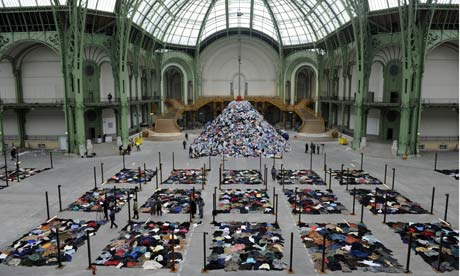
 Μακέτα υπερβατικής πολεοδομίας από τη διπλωματική εργασία φοιτητή στο ΕΜΠ, για «εναέρια» ένωση πάνω από τις στέγες των πολυκατοικιών του λόφου Στρέφη με άλλο σημείο της πόλης. Οδηγός και για άλλες περιοχές, για αποσυμφόρηση της Αθήνας…Μια προσπάθεια αποτύπωσης μιας άλλης πολεοδομικής σκέψης για το εγγύς μέλλον, που αποκαλείται υπερβατική ή ουτοπική πολεοδομία.
Μακέτα υπερβατικής πολεοδομίας από τη διπλωματική εργασία φοιτητή στο ΕΜΠ, για «εναέρια» ένωση πάνω από τις στέγες των πολυκατοικιών του λόφου Στρέφη με άλλο σημείο της πόλης. Οδηγός και για άλλες περιοχές, για αποσυμφόρηση της Αθήνας…Μια προσπάθεια αποτύπωσης μιας άλλης πολεοδομικής σκέψης για το εγγύς μέλλον, που αποκαλείται υπερβατική ή ουτοπική πολεοδομία. Ενα αντίστοιχο «εναέριο χωριό» βρέθηκε πριν από περίπου σαράντα χρόνια στη ζούγκλα της νοτιοανατολικής Ινδονησίας. Ενας πραγματικός οικισμός «χτισμένος» πάνω σε δέντρα από τη φυλή Koravai. Τα υπερυψωμένα ξύλινα σπίτια βρίσκονται σε ύψος που φτάνει έως και τα 35 μέτρα πάνω από το έδαφος. Μια κλειστή κοινωνία που ζει από το κυνήγι και τη συλλογή καρπών. Κατεβαίνει στα άλλα χωριά μόνο για να πουλήσει-ανταλλάξει δικά της πράγματα μ’ εκείνα άλλων φυλών. Θα μπορούσε να είναι το φανταστικό χωριό του Βερν.
Ενα αντίστοιχο «εναέριο χωριό» βρέθηκε πριν από περίπου σαράντα χρόνια στη ζούγκλα της νοτιοανατολικής Ινδονησίας. Ενας πραγματικός οικισμός «χτισμένος» πάνω σε δέντρα από τη φυλή Koravai. Τα υπερυψωμένα ξύλινα σπίτια βρίσκονται σε ύψος που φτάνει έως και τα 35 μέτρα πάνω από το έδαφος. Μια κλειστή κοινωνία που ζει από το κυνήγι και τη συλλογή καρπών. Κατεβαίνει στα άλλα χωριά μόνο για να πουλήσει-ανταλλάξει δικά της πράγματα μ’ εκείνα άλλων φυλών. Θα μπορούσε να είναι το φανταστικό χωριό του Βερν.
1) Conceptual Artists are mystics rather than rationalists. They leap to conclusions that logic cannot reach.
2) Rational judgments repeat rational judgments.
3) Illogical judgments lead to new experience.
4) Formal art is essentially rational.
5) Irrational thoughts should be followed absolutely and logically.
6) If the artist changes his mind midway through the execution of the piece he compromises the result and repeats past results.
7) The artist’s will is secondary to the process he initiates from idea to completion. His willfulness may only be ego.
8) When words such as painting and sculpture are used, they connote a whole tradition and imply a consequent acceptance of this tradition, thus placing limitations on the artist who would be reluctant to make art that goes beyond the limitations.
9) The concept and idea are different. The former implies a general direction while the latter is the component. Ideas implement the concept.
10) Ideas alone can be works of art; they are in a chain of development that may eventually find some form. All ideas need not be made physical.
11) Ideas do not necessarily proceed in logical order. They may set one off in unexpected directions but an idea must necessarily be completed in the mind before the next one is formed.
12) For each work of art that becomes physical there are many variations that do not.
13) A work of art may be understood as a conductor from the artists’ mind to the viewers. But it may never reach the viewer, or it may never leave the artists’ mind.
14) The words of one artist to another may induce a chain of ideas, if they share the same concept.
15) Since no form is intrinsically superior to another, the artist may use any form, from an expression of words (written or spoken) to physical reality, equally.
16) If words are used, and they proceed from ideas about art, then they are art and not literature, numbers are not mathematics.
17) All ideas are art if they are concerned with art and fall within the conventions of art.
18) One usually understands the art of the past by applying the conventions of the present thus misunderstanding the art of the past.
19) The conventions of art are altered by works of art.
20) Successful art changes our understanding of the conventions by altering our perceptions.
21) Perception of ideas leads to new ideas.
22) The artist cannot imagine his art, and cannot perceive it until it is complete.
23) One artist may misperceive (understand it differently from the artist) a work of art but still be set off in his own chain of thought by that misconstruing.
24) Perception is subjective.
25) The artist may not necessarily understand his own art. His perception is neither better nor worse than that of others.
26) An artist may perceive the art of others better than his own.
27) The concept of a work of art may involve the matter of the piece or the process in which it is made.
28) Once the idea of the piece is established in the artist’s mind and the final form is decided, the process is carried out blindly. There are many side effects that the artist cannot imagine. These may be used as ideas for new works.
29) The process is mechanical and should not be tampered with. It should run its course.
30) There are many elements involved in a work of art. The most important are the most obvious.
31) If an artist uses the same form in a group of works and changes the material, one would assume the artist’s concept involved the material.
32) Banal ideas cannot be rescued by beautiful execution.
33) It is difficult to bungle a good idea.
34) When an artist learns his craft too well he makes slick art.
35) These sentences comment on art, but are not art.

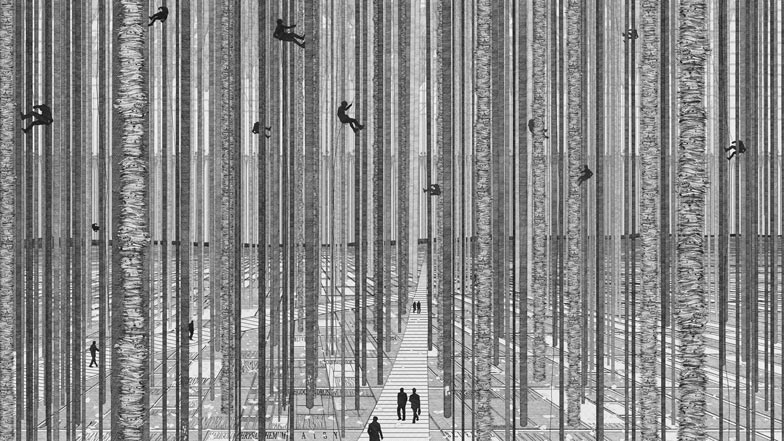
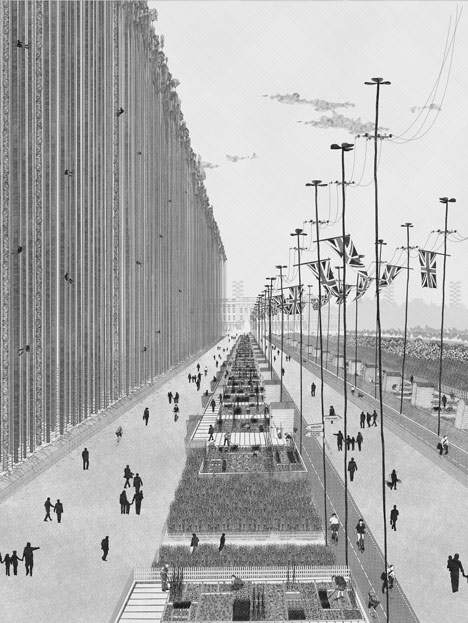

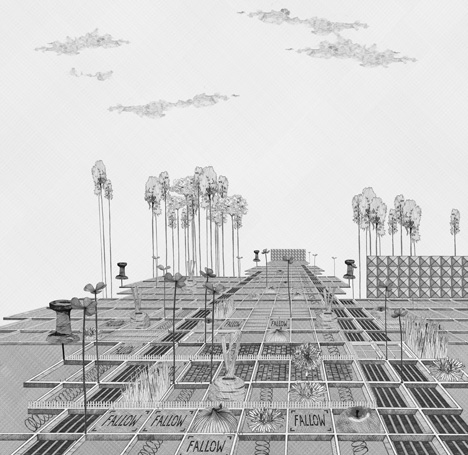
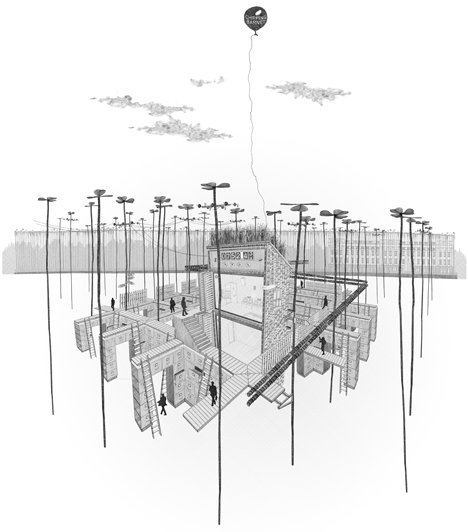

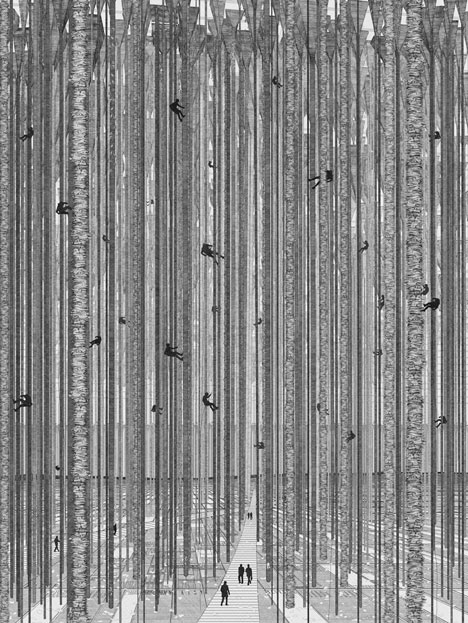


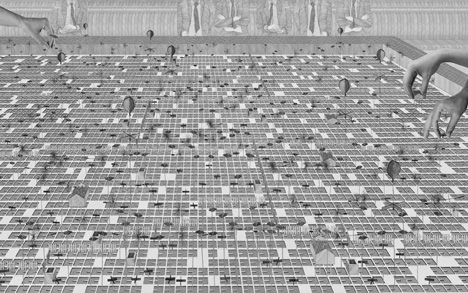




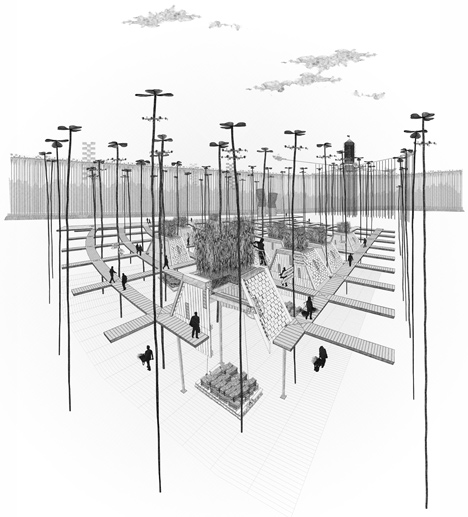

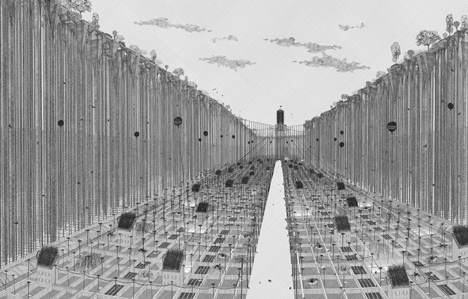

black or blue, in hexadecimal such as #2f0 or #22ff00, in decimal like rgb(255,255,127), or as percentages of the form rgb(100%,100%,50%).[31]<svg xmlns="http://www.w3.org/2000/svg" version="1.1">
<rect width="300" height="100" style="fill:rgb(0,0,255);stroke-width:1;stroke:rgb(0,0,0)" />
</svg>
svg(web vector graphics)
-scalable vector graphics
rectagle
<rect x,y width/…..
……id and css class
html likes for drawing
mozilla download center– a map of the wolr the svg map-
benjamin joffes
population demo
think about data visualizations
————————————-recordings ———–ur. data bases
bespin (created by mozilla)
again a data visualization for svg and canvas by the german elections
it supports all the modern ——-svg web / java script base
SVG web
SVG is the future so is the main requirment for obtaining a minimal understanding of
canvas and svg (they are
html 5 video
application cashe-database
Number object’s properties to assign values to several numeric variables:var biggestNum = Number.MAX_VALUE;var smallestNum = Number.MIN_VALUE;var infiniteNum = Number.POSITIVE_INFINITY;var negInfiniteNum = Number.NEGATIVE_INFINITY;var notANum = Number.NaN;
The following example converts the Date object to a numerical value using Number as a function:var d = new Date("December 17, 1995 03:24:00");print(Number(d));// printThis displays "819199440000".
*MAX_VALUE-MAX_VALUE.MIN_VALUE-MIN_VALUE.NaNNEGATIVE_INFINITYPOSITIVE_INFINITYprototype|
|
s1 = "2 + 2"; // creates a string primitives2 = new String("2 + 2"); // creates a String objectconsole.log(eval(s1)); // returns the number 4console.log(eval(s2)); // returns the string "2 + 2" |
String generic methodsArray methods.var num = 15;alert(String.replace(num, /5/, '2'));
/*globals define*/// Assumes all supplied String instance methods already present (one may use shims for these if not available)(function () { 'use strict'; var i, // We could also build the array of methods with the following, but the // getOwnPropertyNames() method is non-shimable: // Object.getOwnPropertyNames(String).filter(function (methodName) {return typeof String[methodName] === 'function'}); methods = [ 'quote', 'substring', 'toLowerCase', 'toUpperCase', 'charAt', 'charCodeAt', 'indexOf', 'lastIndexOf', 'startsWith', 'endsWith', 'trim', 'trimLeft', 'trimRight', 'toLocaleLowerCase', 'toLocaleUpperCase', 'localeCompare', 'match', 'search', 'replace', 'split', 'substr', 'concat', 'slice', 'fromCharCode' ], methodCount = methods.length, assignStringGeneric = function (methodName) { var method = String.prototype[methodName]; String[methodName] = function (arg1) { return method.apply(arg1, Array.prototype.slice.call(arguments, 1)); }; }; for (i = 0; i < methodCount; i++) { assignStringGeneric(methods[i]); }}());
string instances-methods- non-native methods
uowm2013-1lesson-javascript lanqauge code
// explanations about i frme -examples 14years old Nyegen Phong,
-change the gameHeight and gameWidth variables
-change the height and width attributes
iframe.game class, in the style of the index page
//asigning variables
var gameHeight = 320
var gameWidth = 360
var intervalOne,intervalTwo,timeoutOne,x
var angle = 2
var tempX = 0
var tempY = 0
var block = 1
var square = 0
var squareTop = 0
var squareLeft = 0
var squareMotion = 1
var speed = 80
var getPad = 0
var nextScore = 0
var score = 0
var count = 0
var collisionOne = 0
var collisionTwo = 0
var collisionThree = 0
document.body.style.margin = “0px”
document.body.style.padding = “0px”
function setupGame() // about fuctions, doc., pad L.T,R,…
{
document.getElementById(“game”).style.borderRight = “1px solid #aaa”
document.getElementById(“game”).style.borderRight = “1px solid #aaa”
document.getElementById(“game”).style.borderBottom = “1px solid #aaa”
document.getElementById(“game”).style.width = gameWidth+”px”
document.getElementById(“game”).style.height = gameHeight+”px”
document.getElementById(“square0”).style.position = “absolute”
document.getElementById(“square0”).style.width = “40px”
document.getElementById(“square0”).style.height = “40px”
document.getElementById(“square0”).style.backgroundColor = “#444”
document.getElementById(“square0”).style.display = “none”
document.getElementById(“square1”).style.position = “absolute”
document.getElementById(“square1”).style.width = “40px”
document.getElementById(“square1”).style.height = “40px”
document.getElementById(“square1”).style.backgroundColor = “#444”
document.getElementById(“square1”).style.display = “none”
document.getElementById(“pad”).style.position = “absolute”
document.getElementById(“pad”).style.width = “60px”
document.getElementById(“pad”).style.height = “30px”
document.getElementById(“pad”).style.paddingTop = “10px”
document.getElementById(“pad”).style.textAlign = “center”
document.getElementById(“pad”).style.font = “15px Verdana, sans-serif”
document.getElementById(“pad”).style.backgroundColor = “#000”
document.getElementById(“pad”).style.color = “#fff”
document.getElementById(“pad”).innerHTML = “PLAY“
document.getElementById(“play”).style.color = “#fff”
document.getElementById(“play”).style.textDecoration = “none”
padTop = Math.floor(gameHeight/2)-20
padLeft = Math.floor(gameWidth/2)-30
document.getElementById(“pad”).style.top = padTop+”px”
document.getElementById(“pad”).style.left = padLeft+”px”
document.getElementById(“notepad”).innerHTML = “BounceGame”
document.getElementById(“notepad”).style.padding = “10px”
document.getElementById(“notepad”).style.textAlign = “center”
document.getElementById(“notepad”).style.font = “2.0em Georgia, serif”
document.getElementById(“notepad”).style.fontWeight = “normal”
document.getElementById(“notepad”).style.color = “#222”
timeoutOne = setTimeout(“intervalTwo = setInterval(‘demoGame()’, speed)”, 4000)
}
function demoGame()
{
angle = 2
clearTimeout(timeoutOne)
document.getElementById(“square0”).style.display = “block”
document.getElementById(“square1”).style.display = “block”
if(square == 0)
{
x = document.getElementById(“square0”)
square = 1
}
else
{
x = document.getElementById(“square1”)
square = 0
}
bounceGame()
}
function newGame()
{
block = 0
angle = 2
tempX = 0
tempY = 0
square = 0
squareTop = 0
squareLeft = 0
squareMotion = 1
nextScore = 0
score = 0
count = 0
collisionOne = 0
collisionTwo = 0
collisionThree = 0
clearTimeout(timeoutOne)
clearInterval(intervalOne)
clearInterval(intervalTwo)
document.getElementById(“square0”).style.left = “0px”
document.getElementById(“square0”).style.top = “0px”
document.getElementById(“square0”).style.display = “block”
document.getElementById(“square1”).style.left = “0px”
document.getElementById(“square1”).style.top = “0px”
document.getElementById(“square1”).style.display = “block”
document.getElementById(“pad”).style.top = (gameHeight-40)+”px”
document.getElementById(“pad”).innerHTML = “”
document.getElementById(“notepad”).innerHTML = “”
intervalOne = setInterval(“playGame()”, speed)
}
function playGame()
{
if(block)
{
return
}
if(square == 0)
{
x = document.getElementById(“square0”)
square = 1
}
else
{
x = document.getElementById(“square1”)
square = 0
}
bounceGame()
checkCollision()
}
function assignM(aM)
{
squareMotion = aM
}
function bounceGame()
{
if(squareMotion==1)
{
if(squareTop>=(gameHeight-40) && squareLeft>=(gameWidth-40))
{
assignM(3)
moveDR(-40)
}
if(squareTop>=(gameHeight-40))
{
assignM(2)
moveDL(-40)
}
else if(squareLeft>=(gameWidth-40))
{
assignM(4)
moveDL(40)
}
else {
moveDR(40)
}
}
else if(squareMotion==2)
{
if(squareTop=(gameWidth-40))
{
assignM(4)
moveDL(40)
}
if(squareLeft>=(gameWidth-40))
{
assignM(3)
moveDR(-40)
}
else if(squareTop<=0)
{
assignM(1)
moveDR(40)
}
else
{
moveDL(-40)
}
}
else if(squareMotion==3)
{
if(squareTop<=0 && squareLeft<=0)
{
assignM(1)
moveDR(40)
}
if(squareTop<=0)
{
assignM(4)
moveDL(40)
}
else if(squareLeft<=0)
{
assignM(2)
moveDL(-40)
}
else
{
moveDR(-40)
}
}
else if(squareMotion==4)
{
if(squareTop>=(gameHeight-40) && squareLeft<=0)
{
assignM(2)
moveDL(-40)
}
if(squareLeft<=0)
{
assignM(1)
moveDR(40)
}
else if(squareTop>=(gameHeight-40))
{
assignM(3)
moveDR(-40)
}
else
{
moveDL(40)
}
}
}
function moveDR(amount)
{
save = amount
amount = Math.floor(amount/angle)
if(angle == 0)
{
amount = 0
}
squareLeft += amount
x.style.left = squareLeft+”px”
squareTop += save
x.style.top = squareTop+”px”
}
function moveDL(amount)
{
save = amount
amount = Math.floor(amount/angle)
if(angle == 0)
{
amount = 0
}
squareLeft -= amount
x.style.left = squareLeft+”px”
squareTop += save
x.style.top = squareTop+”px”
}
function assignAngle(aa)
{
if(aa==1)
{
angle = 0
nextScore = 1000
}
if(aa==2)
{
angle = 2
nextScore = 100
}
score += nextScore
document.getElementById(“pad”).innerHTML = nextScore
}
function flashScore()
{
if(score > 0)
{
if(nextScore == “BounceGame”)
{
nextScore = score
}
else
{
nextScore = “BounceGame”
}
document.getElementById(“notepad”).innerHTML = nextScore
}
else
{
document.getElementById(“notepad”).innerHTML = “BounceGame”
}
}
function countUp()
{
if(count < (Math.floor(score/10)*8))
{
count += Math.floor(score/10)
}
else if(count >= (Math.floor(score/10)*8) && count <= (Math.floor(score/10)*9))
{
if((Math.floor(score/10)*9) > 200)
{
count += Math.floor(score/10)
}
else
{
count += 10
}
}
else
{
if(Math.floor(score/10) > 30)
{
count += 10
}
else
{
count += 1
}
}
if(count > score)
{
count = score
clearInterval(intervalOne)
intervalOne = setInterval(“flashScore()”, 2000)
}
document.getElementById(“notepad”).innerHTML = count
}
function checkCollision()
{
var actualLeft = getPad-30
if(squareTop == 0)
{
document.getElementById(“pad”).innerHTML = “”
}
if((squareTop+40)==(gameHeight-40))
{
difference = Math.floor(squareLeft-actualLeft)
if(difference>=(-39)&&difference<4)
{
collisionOne++
collisionTwo = 0
collisionThree = 0
if(collisionOne > 3)
{
assignM(Math.floor(Math.random() * 2) + 2)
}
else
{
assignM(3)
}
assignAngle(2)
}
else if(difference>=5&&difference<15)
{
collisionOne = 0
collisionTwo++
collisionThree = 0
if(collisionTwo > 3)
{
assignM(Math.floor(Math.random() * 2) + 2)
assignAngle(2)
}
else
{
assignM(3)
assignAngle(1)
}
}
else if(difference>=15&&difference<59)
{
collisionOne = 0
collisionTwo = 0
collisionThree++
if(collisionThree > 3)
{
assignM(Math.floor(Math.random() * 2) + 2) // examples by math creativity-flash creativity paul-
}
else
{
assignM(2)
}
assignAngle(2)
}
}
else if((squareTop+40)==gameHeight)
{
block = 1
clearInterval(intervalOne)
setupGame()
intervalOne = setInterval(“countUp()”, speed)
}
}
function getMouseXY(e)
{
if(navigator.appName==”Netscape”)
{
tempX = e.pageX
tempY = e.pageY
}
else
{
tempX = event.clientX + document.body.scrollLeft
tempY = event.clientY + document.body.scrollTop
}
if(tempX < 0)
{
tempX = 0
}
getPad = tempX
if(getPad <= 30)
{
getPad = 30
}
if((getPad-30) > Math.floor(gameWidth-60))
{
getPad = Math.floor(gameWidth-60)+30
}
if(!block)
{
document.getElementById(“pad”).style.left = (getPad-30)+”px”
}
}
document.onmousemove = getMouseXY
setupGame()
/*create a file named countdown.css in a folder css**************************************************
***************************************************/
.>>>>>>>>>>>>>>>>>>>>>>>>>>>>>>>>>>>>>>>>>>>>>>>>>>>>>>>>>>>>>>>>>>>>>>>>>>>>>>>>>>>>>>>>>>>>>>>>>>>>>>>>>>>>>>>>>>>>>>>>>
ul.jCounterDefault {
height: 5.2em;
margin: 0;
font-size: 16px; /* change to resize counter */
padding: 0;
}
ul.jCounterDefault * {
margin: 0;
padding: 0;
}
ul.jCounterDefault li {
background-color: #333;
border: 0.16em solid #fff;
color: #fff;
display: inline;
float: left;
list-style-type: none;
margin-left: 0.2em;
min-width: 4.3em;
position: relative;
text-align: center;
border-radius: 0.5em;
-moz-box-shadow: 0 0 0.2em #777;
-ms-box-shadow: 0 0 0.2em #777;
-o-box-shadow: 0 0 0.2em #777;
-webkit-box-shadow: 0 0 0.2em #777;
box-shadow: 0 0 0.2em #777;
}
ul.jCounterDefault span {
display: block;
font: normal bold 300% times;
letter-spacing: 0.08em;
margin-left: 0.06em;
padding: 0 0.1em;
}
ul.jCounterDefault em.textDays, ul.jCounterDefault em.textHours, ul.jCounterDefault em.textMinutes, ul.jCounterDefault em.textSeconds{
display: block;
font: normal normal 80% “Trebuchet MS”;
letter-spacing: 0;
margin: 0 auto;
padding-bottom: 0.4em;
}
.>>>>>>>>>>>>>>>>>>>>>>>>>>>>>>>>>>>>>>>>>>>>>>>>>>>>>>>>>>>>>>>>>>>>>>>>>>>>>>>>>>>>>>>
//////////////////////////////////////////////////////////////
jCounter – jQuery plugin – devingredients.com
// the file is not working when runs locally
$(document).ready(function() {
//first counter
$(“.countdown1”).jCounter({
date: “01 january 2013 12:00:00”, //format: DD month YYYY HH:MM:SS
timezone: “Europe/Bucharest”,
format: “dd:hh:mm:ss”,
twoDigits: ‘on’,
fallback: function() { console.log(“Counter 1 finished!”) }
});
$(‘.pause1’).click(function() {
$(“.countdown1”).jCounter(‘pause’);
});
$(‘.stop1’).click(function() {
$(“.countdown1”).jCounter(‘stop’);
});
$(‘.start1’).click(function() {
$(“.countdown1”).jCounter(‘start’);
});
//second counter
$(“.countdown3”).jCounter({
format: “ss”,
twoDigits: ‘on’,
customDuration: 60*9, //9 minutes
fallback: function() { console.log(“Counter 2 finished! “) }
});
$(‘.pause3’).click(function() {
$(“.countdown3”).jCounter(‘pause’);
});
$(‘.stop3’).click(function() {
$(“.countdown3”).jCounter(‘stop’);
});
$(‘.reset3’).click(function() {
$(“.countdown3”).jCounter(‘reset’);
});
$(‘.start3’).click(function() {
$(“.countdown3”).jCounter(‘start’);
});
//third counter
$(“.countdown2”).jCounter({
format: “dd:hh:mm:ss”,
twoDigits: ‘on’,
customRange: ’10:9999′,
fallback: function() { console.log(“Counter 3 finished!”) }
});
$(‘.pause2’).click(function() {
$(“.countdown2”).jCounter(‘pause’);
});
$(‘.stop2’).click(function() {
$(“.countdown2”).jCounter(‘stop’);
});
$(‘.reset2’).click(function() {
$(“.countdown2”).jCounter(‘reset’);
});
$(‘.start2’).click(function() {
$(“.countdown2”).jCounter(‘start’);
});
});
00
Days
00
Hours
00
Minutes
00
Seconds
00
Seconds
00
Hours
00
Minutes
00
Seconds
/////////////////////////////
and finally the php file dateandtime.php
that has to be executed(+php server)
<?php
if (isset($_GET[‘timezone’])) {
$timezone = new DateTimeZone($_GET[‘timezone’]);
} else {
$timezone = new DateTimeZone(“Europe/London”);
}
$date = new DateTime();
$date->setTimezone($timezone);
$dateAndTime = array(“currentDate”=>$date->format(‘d F Y H:i:s’));
echo $_GET[‘callback’] . ‘(‘ . json_encode($dateAndTime) . ‘)’;
?>
/////////////////////////////////////////////////////////////////////////////////////////////////////////////////////////////////////////////////////////////////////////////////////////////////download //////////////////////////////////////////////////////////////////////////////////
//////////////////////////////////////////////////////////
//////////////////////////////////////////////////////////////
Powered by WordPress